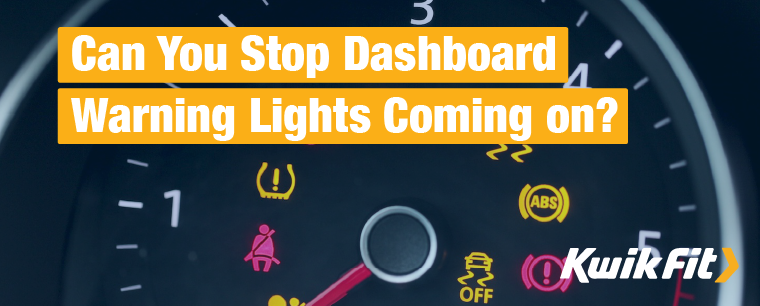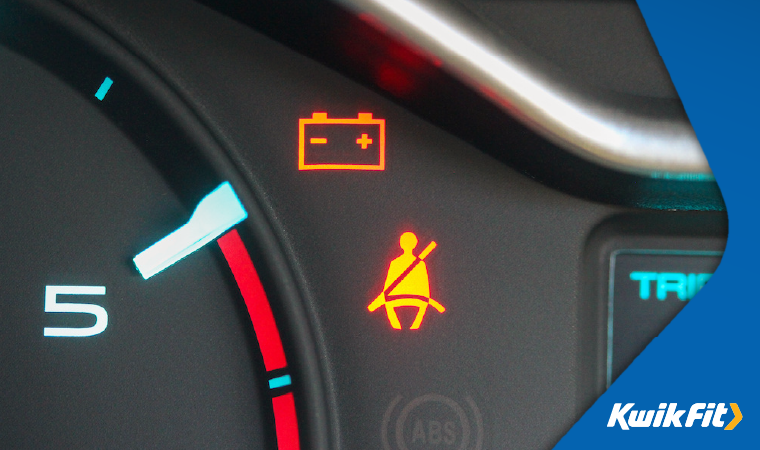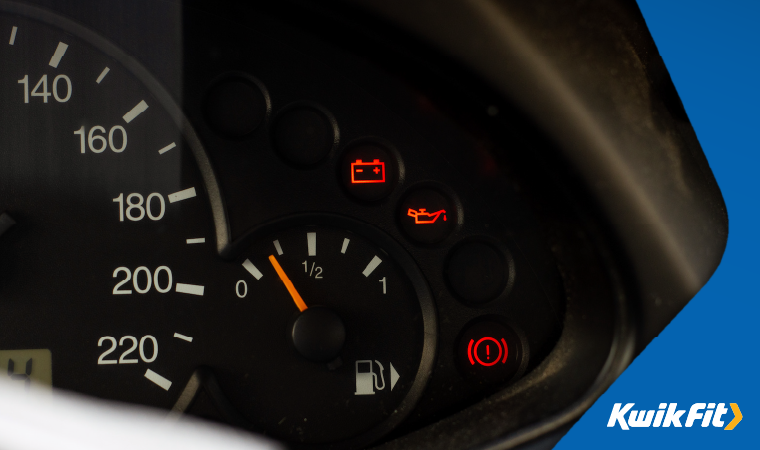Can You Stop Dashboard Warning Lights Coming on?
Jack Dreyer | Monday 18th March 2024 5:00pm

One of the worst things to experience whilst driving, especially if you need to get anywhere quickly, is to see the sudden turning-on of a dashboard warning light. What does it mean? What caused it? Why did it happen? The symbol itself doesnít really tell you much in the moment, and leaves you guessing a little until you can sort it out. If you can sort it out, that is.
So is there a way to turn them off? Should you? Read on to find out more.
Why do dashboard warning lights come on?
There are multiple reasons why dashboard warning lights may come on unexpectedly, and they can range from an improperly closed door to a critical engine problem. There are over 52 different dashboard warning lights with various symbols and colours which are trying to inform you of a myriad of problems. We will go over the most common warnings and what their colours mean here:
Green lights

Green lights tell you when something is functioning properly and usually donít require any action. These can include indicators, cruise control activation, and dipped beams. Often, when these lights are on, you know that this function is currently active. So, usually turning off whatever function they are pointing to will remove the dashboard light.
Amber lights

Usually, less severe problems which need to be checked as soon as possible tend to be in an amber/yellow colour. Many of these lights simply warn you about conditions around you, such as the slippery warning and cold external temperature lights.
This also means many of the symbols are alerting you that automatic functions are active. These functions could be a speed limiter, parking heating, a windscreen defroster, parking sensors or a rain sensor. However, there are also more serious problems which come up as amber symbols; from low washer fluid to engine malfunctions, broken lights and shock absorber malfunction. These should be checked as soon as possible.
Red lights

Red lights indicate a problem which needs immediate remedy. Some are less serious than others, for example, an open car boot or door, or an unfastened seat belt - which are easy to remedy with a quick stop. However, others, such as low battery voltage, engine overheating and power steering failure need more drastic attention.
Blue lights
Usually, the only blue light you will see is to indicate that your high beam headlights are currently turned on. You should be able to see quite easily when these lights are active, and they are useful for dark roads when there is no oncoming traffic. But, if you see the blue light on and there are cars approaching you should turn off your high beams as they can be dazzling and dangerous.
Can you turn off dashboard warning lights?
It is important to remember that warning lights are usually trying to help you understand there is a problem, no matter how minor, with your car. As stated above, some of these are just letting you know basic functions are working or active and the easiest way to remove those lights is to turn those functions off, as long as they are not critical to the running of your car. At Kwik Fit, we can do a diagnostics test to work out the precise problem your lights are trying to indicate.
However, it can be that lights show without there being a problem, which indicates there is another problem in the lights themselves, this is common in the Tyre Pressure Monitoring System (TPMS) which can lead to you failing your MOT.
If you suspect this has happened, your first port of call should be to find a safe place to park, turn off your engine, and restart your car to see if any of the dashboard lights turn on again. Persistent lights should be dealt with, and the best way to do this is to take your car to a local Kwik Fit centre for a checkup.
Regular service and maintenance will keep most of these lights off, but you never know what may happen and when they do come up you can look at our handy guide to see what the problem may be.
You should not seek to turn off or cover up dashboard lights because they are annoying; they are telling you about your car and, if they are failing to do so properly, that in itself is a problem which needs to be fixed.
Keep your car happy
The best way to make sure you stay safe while driving and to keep up to date with which components of your car are healthy and functioning properly, is to regularly service your car Ė the experts at your local Kwik Fit centre can check everything from tyres to oil and make sure everythingís kept suitably tweaked and ready to go.
For more motoring advice, keep up with the Kwik Fit blog; or, for any questions you might have, get in touch with our experts today.
Any facts, figures and prices shown in our blog articles are correct at time of publication.
Featured Articles
Is it Illegal to Drive With One Headlight?
Saturday 19th July 2025
Wondering if itís illegal to drive with one headlight? Learn about the safety risks and penalties of illegal blown bulbs and why you should fix them promptly.
Air Con in EVs & Hybrids: Experts Answer Your Questions
Monday 30th June 2025
Does air con drain EV batteries? Can you use the air con while charging an electric car? Find out the answers to these questions & more from Kwik Fitís experts.
Why Is Your Car Making a Noise? Fixes & Tips
Friday 13th June 2025
When your car starts making unexpected noises, it can certainly be quite disconcerting; it may be nothing to worry about, but hereís what you need to know.









